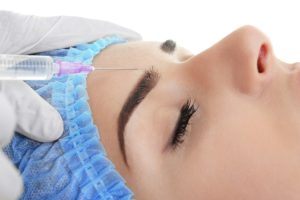It seems as though a new anti-wrinkle treatment is approved or launched on a weekly basis, which begs the question: do we really need more fillers to help soften fine lines or add volume back to deeper folds?
And the answer is a resounding YES, according to top facial aesthetic doctors.
For a time, all doctors had in their wrinkle-filling-toolbox was collagen — and it was good (depending on who you ask). The greatest risk was allergic reaction, though the cosmetic results tended to vary as well.
The newer options are safer and the effects last longer. As it stands there are about 30 fillers with the U.S. Food and Drug Administration’s stamp of approval — and far more available outside the U.S., as well as in the pipeline. Many are hyaluronic acid-based (HA) fillers. HA is found naturally in all cells of the body, but our supply dwindles with age. There is no risk of allergic reaction with HA.
In some instances, the differences between HA filler A and HA filler B may be marginal, but it other cases, they can be much more significant. For instance, Juvederm (an HA filler) may be great for smoothing marionette lines around the mouth, while Juvederm Voluma actually recreates cheeks — and the results last much longer than regular juvederm. Juvederm Volbella and Restylane Silk are exclusively for the lips. Future HA fillers may improve skin quality by adding moisture back. (Think of it as an internal moisturizer with external effects). Some are premixed with pain-killing lidocaine to reduce the “ouch” factor. Results may last from 3 to 18 months depending on the specific filler. And all HA injections can be reversed if you are unhappy with the results.
Other types fill in lines and folds from the inside out and the outside in by plumping lines and boosting our natural supply of collagen, the protein that gives skin its supple and elastic properties.
The development of all these different fillers has allowed for an a la carte approach to facial rejuvenation. While liquid facelift is a misnomer, mixing and matching fillers can achieve results that are closer to what was once seen with a surgical facelift.
Thanks to all of these filler choices, we have evolved from chasing lines and filling folds to recontouring faces for a more complete facial rejuvenation using an entire palate. It’s no longer one-size fits all. More choices often means better results. Choose a facial plastic surgeon or dermatologist who has experience with all the different types of fillers and filler families so he or she can make the best choices based on your anatomy and goals.


